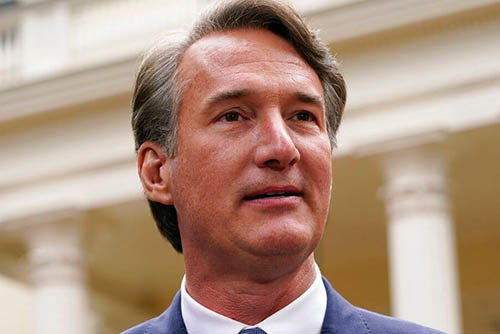$1 Billion in Federal Funding to Transform Rural Health Care
 RICHMOND, VA — Governor Glenn Youngkin today announced that Virginia has submitted its application for $1 billion in federal Rural Health Transformation funding under H.R. 1, which was signed into law by President Trump on July 4, 2025. The Commonwealth’s proposal — VA Rural Vitality — presents a bold, locally-driven plan to modernize health care delivery, expand the workforce, and improve outcomes across rural Virginia.
RICHMOND, VA — Governor Glenn Youngkin today announced that Virginia has submitted its application for $1 billion in federal Rural Health Transformation funding under H.R. 1, which was signed into law by President Trump on July 4, 2025. The Commonwealth’s proposal — VA Rural Vitality — presents a bold, locally-driven plan to modernize health care delivery, expand the workforce, and improve outcomes across rural Virginia.
Developed under Executive Directive Twelve and led by Secretary of Health and Human Resources Janet V. Kelly, VA Rural Vitality reflects extensive input from communities and providers across the Commonwealth, as well as research on national best practices to deliver lasting change in rural health.
“Our VA Rural Vitality plan takes bold action to ensure every Virginian – no matter their zip code – can access high-quality care close to home,” said Governor Glenn Youngkin. “This $1 billion investment will strengthen our workforce, expand innovative care models, and deliver the tools communities need to live healthier, more productive lives. I want to thank President Trump and his administration for their collaboration and commitment to transforming rural health care and building a stronger, healthier Virginia for generations to come.”
Four Initiatives Driving Rural Health Transformation
The plan centers on four initiatives designed to empower healthier lives, strengthen the workforce, reimagine care delivery, and accelerate innovation.
Through VA Rural Vitality, Virginia will:
- Empower healthier lives: Launch incentive-based programs and technology-driven tools that help Virginians prevent and manage chronic conditions.
- Grow our own workforce: Build local health pipelines through high schools, community colleges, and universities to train and retain the next generation of rural health professionals.
- Rewire care delivery: Expand hybrid and mobile care models, connect rural providers to larger health systems, and develop sustainable payment structures.
- Invest in innovation: Deploy advanced technologies, including AI-powered tools, to improve access, coordination, and patient outcomes.
Once funding is awarded, the initiative will be implemented through the Department of Medical Assistance Services (DMAS) in partnership with the Virginia Department of Health (VDH) and the Office of the Secretary of Health and Human Resources. The Commonwealth will also work alongside hospitals, health systems, federally qualified health centers, food banks, and health technology partners to drive measurable impact statewide.
“This plan reflects the voices of rural Virginians,” said Secretary of Health and Human Resources Janet V. Kelly. “From Chincoteague to the Cumberland Gap, we listened to Virginians who want their health care to improve — and VA Rural Vitality directly responds to their needs with innovative, community-based solutions.”
“We are proud to submit a plan that not only addresses today’s needs but builds a foundation for lasting rural health improvements for generations,” said Cheryl Roberts, DMAS Director. “We look forward to the work ahead with partners across the Commonwealth to deliver this transformational change.”
“Every region of rural Virginia has a role in this work,” added Dr. Karen Shelton, VDH State Health Commissioner. “By connecting care, strengthening the workforce, and supporting healthier lifestyles, we can increase local access to quality care and transform outcomes across the Commonwealth.”
The federal Centers for Medicare & Medicaid Services will make Rural Health Transformation awards by December 31, 2025. More information on Virginia’s application can be found at https://www.hhr.virginia.gov/initiatives/rural-health/.
Background
Rural communities across Virginia face some of the most significant health disparities in the nation:
- Nearly 55% of rural localities are in Primary Care Health Professional Shortage Areas.
- 63% of Virginia counties lack an OB-GYN, and 22% of rural residents travel over 40 minutes to reach a labor and delivery unit.
- Chronic conditions such as diabetes, obesity, and hypertension all exceed national averages.
- Substance use disorder affects 17% of rural adults and 9% of youth aged 12–17.
Governor Youngkin’s administration has made historic progress improving behavioral health, reducing fentanyl deaths by 59%, and cutting maternal deaths by 49%. VA Rural Vitality builds on that momentum with a comprehensive strategy to make rural Virginia healthy again.








